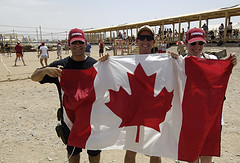1. Paco might experience the Niagara Falls
Let's learn about modal verbs in general. Pay attention to this video and then answer the questions below.
1- What are the modal verbs?
2- Why are they sometimes referred to as modal auxiliary verbs?
3- Complete these rules:
There is no _______ in the 3rd person singular.
There is no _____________ in the negative.
There is no _____________ in the question.
Modal verbs do not normally have_____________ forms.
Modal verbs do not have ______________ or -ing forms.
They are followed by an ____________ without 'to'. (Exception: ought to)
A modal verb, also called modal auxiliary verb, is a type of auxiliary verb used to indicate modality, for example: ability, possibility, necessity, obligation, advice, etc.
What is the structure for the affirmative, the negative and the interrogative forms?
| AFFIRMATIVE | Subject + modal + infinitive |
| NEGATIVE |
_______ + _____+ not + _________ |
| INTERROGATIVE | (Wh-word) + _______ + _______ + ________? |
Verdadero Falso
Verdadero Falso
Verdadero Falso
Verdadero Falso
Verdadero Falso
Verdadero Falso
Verdadero Falso
Verdadero Falso
Canada's flag
The official colours of Canada are red and white. The flag contains these colours as well as a maple leaf in the centre, as you can see in the picture. Similar versions were used before but the flag, as it is today, exists only since 1965, and it is the first official National Flag. This day is celebrated every year as the National Flag of Canada Day.

|
| By lafrancevi, C. Commons |